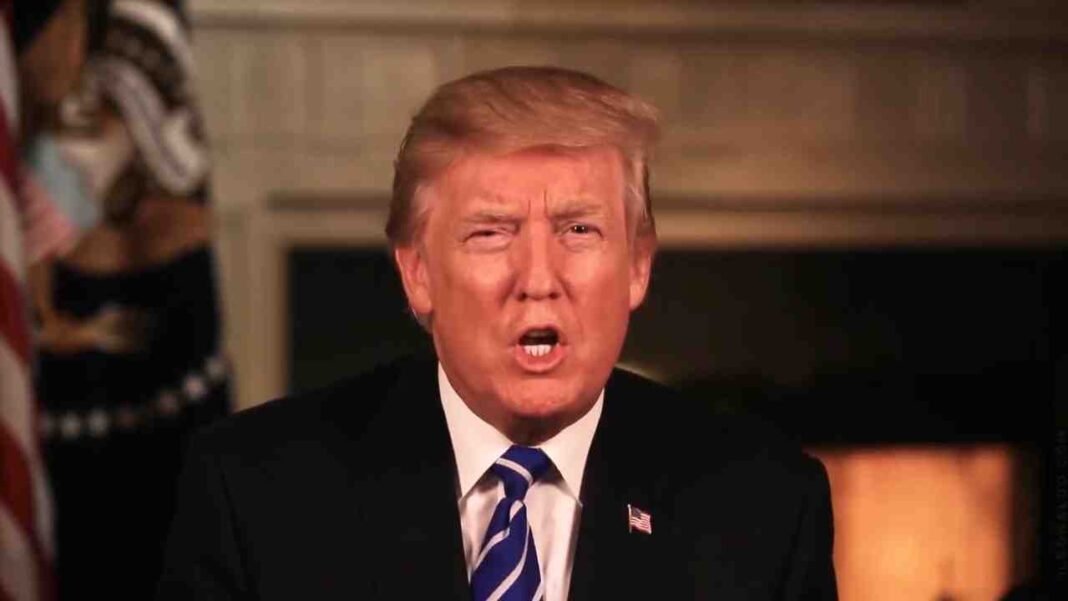In a recent statement on his social media platform, TruthSocial, the US President Donald Trump issued a stern warning to BRICS member countries regarding their discussions of creating a new currency that could potentially replace the U.S. dollar as the global reserve currency. Trump emphasized that these nations must commit to not pursuing such alternatives, or they would face severe economic repercussions, including the imposition of 100% tariffs.
President Trump’s comments come in the wake of ongoing discussions among BRICS nations—comprising Brazil, Russia, India, China, South Africa, Egypt, Ethiopia, Iran, Indonesia, and the United Arab Emirates—about the possibility of establishing a common currency. This dialogue has gained traction particularly after Russia faced significant sanctions from Western countries due to its military actions in Ukraine.
In his post, Donald Trump stated, “We are going to require a commitment from these seemingly hostile countries that they will neither create a new BRICS currency nor back any other currency to replace the mighty U.S. dollar, or they will face 100% tariffs.” This statement echoes a previous threat he made after winning the 2024 presidential election, highlighting his administration’s focus on maintaining the dollar’s dominance in global trade.
Despite the growing discussions among BRICS nations, a study conducted by the Atlantic Council’s GeoEconomics Center in 2024 revealed that the U.S. dollar continues to be the primary reserve currency worldwide. The research indicated that attempts by the euro and other currencies to challenge the dollar’s supremacy have largely been unsuccessful. This underscores the ongoing global reliance on the dollar, even as geopolitical tensions and economic shifts prompt some countries to explore alternatives.
Russia has responded to Trump’s warnings, asserting that any efforts to compel BRICS nations to utilize the dollar would only serve to increase the demand for their national currencies. This sentiment reflects a broader trend among some countries seeking to reduce their dependence on the dollar, particularly in light of recent U.S. economic policies and sanctions.
The push against dollar dominance has been fueled by various factors, including the strong performance of the U.S. economy, changes in taxation and monetary policies, and ongoing geopolitical crises. As nations navigate these complexities, the future of the dollar as the world’s primary reserve currency remains a contentious issue.
In addition to his warnings to BRICS nations, Trump has also announced plans to impose tariffs on neighboring countries, including Canada and Mexico. Starting February 1, he intends to implement a 25% tariff aimed at curbing the influx of illegal immigrants and the trafficking of opioids, particularly fentanyl. This move is part of his broader strategy to address what he describes as significant threats to American safety and security.
Furthermore, the US President Trump has threatened to impose a 10% tariff on imports from China, citing the country’s role in the fentanyl crisis as a detrimental factor for the United States. These tariff proposals reflect Trump’s administration’s aggressive stance on trade and immigration, as well as its commitment to protecting American interests.
As the global economic landscape continues to evolve, the implications of Trump’s statements and proposed tariffs could have far-reaching effects on international trade relations and the future of the U.S. dollar. The ongoing discussions among BRICS nations about currency alternatives will likely remain a focal point in the coming months, as countries weigh the benefits and risks of moving away from dollar dependence.
President Trump’s recent warnings to BRICS countries and his plans for tariffs on neighboring nations highlight the complexities of global trade dynamics and the ongoing debate over the U.S. dollar’s role in the international economy. As nations navigate these challenges, the future of currency dominance and trade relations remains uncertain.








